Linkage Effects Mining in Stock Market Based on Multi-Resolution Time Series Network
Abstract
1. Introduction
2. A Complex Network Model Based on MODWT (Maximal Overlap Discrete Wavelet Transform)
- Feature extraction of multi-resolution time series: the time-series data are divided by year, and then wavelet decomposition is performed on annual data, thus we can obtain the characteristic sequences of different resolutions during different stages.
- Construction of correlation between plate stock: Pearson correlation coefficients are calculated between the wavelet sequences of different years and different resolutions as the weight of the edges in a complex network.
- Reconstruction of multi-resolution threshold network: the network is built based on the Pearson coefficient of different plate stock, and then optimal threshold is used to select to filter the network side in order to construct a threshold network.
- The evolutionary analysis of complex networks: the evolution and trend of networks are analyzed based on multi-resolution threshold network.
2.1. Feature Extraction of Multi-Resolution Time Series
2.2. Construction of Correlation Between Plate Stock
2.3. Reconstruction of Multi-Resolution Threshold Network
- Calculating the Pearson correlation matrix between plate stock and plate stock.
- According to the correlation matrix, as the edge weight of the network, a fully connected network is constructed.
- By screening the modularity degree of all threshold networks, the optimal modularity degree network is selected.
2.4. The Evolutionary Analysis of Complex Networks
3. Results and Analysis Based on Complex Network Analysis Method
3.1. Data and Preliminary
3.2. Plate Evolution Analysis
3.2.1. Analysis of Industry Plate Linkage Evolution
3.2.2. Analysis of Network Characteristics Evolution
3.2.3. Analysis of Key Node Evolution in the Stock Market
4. Conclusions and Discussion
Author Contributions
Funding
Acknowledgments
Conflicts of Interest
References
- Patwary, E.U.; Lee, J.Y.; Nobi, A. Changes of hierarchical network in local and world stock market. J. Kor. Phys. Soci. 2017, 71, 444–451. [Google Scholar] [CrossRef]
- Nie, C.X.; Song, F.T. Constructing financial network based on PMFG and threshold method. Phys. A 2018, 495, 104–113. [Google Scholar] [CrossRef]
- Zhen, S.; Wu, Q.; Wang, X. Excessive co-movement effect and evolution network analysis of Chinese stock market. In Proceedings of the IEEE International Symposium on System Integration, Taipei, Taiwan, 11–14 December 2017; pp. 220–225. [Google Scholar]
- Zhang, X.T.; Zhang, D.; Yuan, Y.; Zhuang, X.W. Fractal characteristic of the Chinese stock market complex network. Syst. Eng. Theo. Prac. 2015, 35, 273–282. [Google Scholar]
- Zhao, L.; Wang, G.J.; Wang, M.; Bao, W.; Li, W.; Stanley, H.E. Stock market as temporal network. Phys. A 2018, 506, 1104–1112. [Google Scholar] [CrossRef]
- Zhu, H.; Zhang, W. Multifractal property of Chinese stock market in the CSI 800 index based on MF-DFA approach. Phys. A 2018, 490, 497–503. [Google Scholar] [CrossRef]
- Lahmiri, S. Clustering of Casablanca stock market based on Hurst exponent estimates. Phys. A 2016, 456, 310–318. [Google Scholar] [CrossRef]
- Salighehdar, A.; Liu, Y.; Bozdog, D.; Florescu, I. Cluster Analysis of Liquidity Measures in a Stock Market Using High Frequency Data. J. Manag. Sci. Bus. Intell. 2017, 2, 1–8. [Google Scholar]
- Marti, G.; Nielsen, F.; Bińkowski, M.; Donnat, P. A review of two decades of correlations hierarchies, networks and clustering in financial market. arXiv preprint, 2017; arXiv:1703.00485. [Google Scholar]
- Chong, E.; Han, C.; Park, F.C. Deep learning networks for stock market analysis and prediction: Methodology, data representations, and case studies. Exp. Syst. Appl. 2017, 83, 187–205. [Google Scholar] [CrossRef]
- Liu, L.; Wu, J.; Li, P.; Li, Q. A social-media-based approach to predicting stock co-movement. Exp. Syst. Appl. 2015, 42, 3893–3901. [Google Scholar] [CrossRef]
- Paranjape-Voditel, P.; Deshpande, U. A stock market portfolio recommender system based on association rule mining. Appl. Soft. Comp. 2013, 13, 1055–1063. [Google Scholar] [CrossRef]
- Yang, R.; Li, X.; Zhang, T. Analysis of linkage effects among industry sectors in China’s stock market before and after the financial crisis. Phys. A 2014, 411, 12–20. [Google Scholar] [CrossRef]
- Hao, X.; An, H.; Qi, H. Evolution of the exergy flow network embodied in the global fossil energy trade: Based on complex network. Appl. Ener. 2016, 162, 1515–1522. [Google Scholar] [CrossRef]
- Jia, X.; An, H.; Sun, X. Evolution of world crude oil market integration and diversification: A wavelet-based complex network perspective. Appl. Ener. 2017, 185, 1788–1798. [Google Scholar] [CrossRef]
- Jiang, M.; Gao, X.; An, H. Reconstructing complex network for characterizing the time-varying causality evolution behavior of multivariate time series. Sci. Rep. 2017, 7, 10486. [Google Scholar] [CrossRef] [PubMed]
- Baumöhl, E.; Kočenda, E.; Lyócsa, Š.; Výrost, T. Networks of volatility spillovers among stock markets. Phys. A 2018, 490, 1555–1574. [Google Scholar] [CrossRef]
- Qiao, H.; Yue, X.; Ying, L. Can Network Linkage Effects Determine Return? Evidence from Chinese Stock Market. PLoS ONE 2016, 11, e0156784. [Google Scholar] [CrossRef] [PubMed]
- Yu, X.; Cui, X.; Cai, R. Financial data division and rules mining based on influence and AP clustering. In Proceedings of the 2016 International Conference on Audio, Language and Image Processing (ICALIP), Shanghai, China, 11–12 July 2016; pp. 504–508. [Google Scholar]
- Huang, X.; An, H.; Gao, X. Multiresolution transmission of the correlation modes between bivariate time series based on complex network theory. Phys. A 2015, 428, 493–506. [Google Scholar] [CrossRef]
- Huang, S.; An, H.; Gao, X. The Multiscale Conformation Evolution of the Financial Time Series. Math. Prob. Eng. 2015, 6, 1–9. [Google Scholar] [CrossRef]
- Lahmiri, S.; Uddin, G.S.; Bekiros, S. Clustering of short and long-term co-movements in international financial and commodity markets in wavelet domain. Phys. A 2017, 486, 947–955. [Google Scholar] [CrossRef]
- Tiwari, A.K.; Oros, C.; Albulescu, C.T. Revisiting the inflation–output gap relationship for France using a wavelet transform approach. Econ. Mode. 2014, 37, 464–475. [Google Scholar] [CrossRef]
- Percival, D.B.; Walden, A.T. Wavelet Methods for Time Series Analysis: The Wavelet Variance; Cambridge University Press: Cambridge, UK, 2006; p. 491. [Google Scholar]
- Dajčman, S. Interdependence Between Some Major European Stock Markets—A Wavelet Lead/Lag Analysis. Prague Econ. Pap. 2013, 22, 28–49. [Google Scholar] [CrossRef]
- Dajcman, S. Are interdependencies between central and eastern European and developed European stock markets returns multiscale? A wavelet lead/lag analysis. Act. Pro. Econ. 2012, 135, 270–283. [Google Scholar]
- Baydilli, Y.Y.; Bayır, S.; Türker, I. A hierarchical view of a national stock market as a complex network. Econ. Comp. Econ. Cyber. Stud. Res. 2017, 51, 205–222. [Google Scholar]
- Newman, M.E.J. Fast algorithm for detecting community structure in networks. Phys. Rev. E 2004, 69, 066133. [Google Scholar] [CrossRef] [PubMed]
- Blondel, V.D.; Guillaume, J.L.; Lambiotte, R.; Lefebvre, E. Fast unfolding of communities in large networks. J. Stat. Mech. 2008, 10, 155–168. [Google Scholar] [CrossRef]
- Newman, M. Networks: An Introduction. Astron. Nach. 2010, 8, 741–743. [Google Scholar]

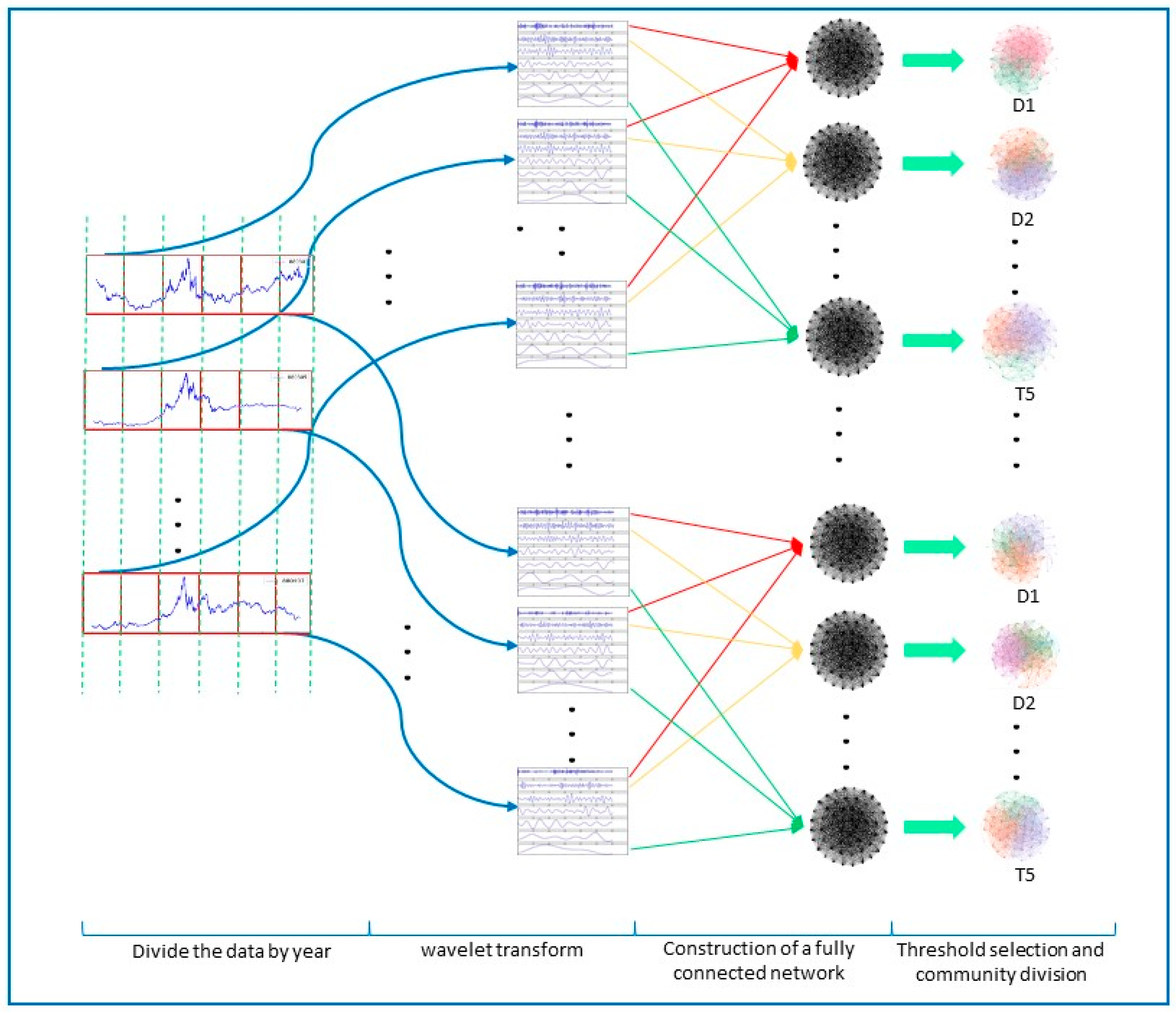
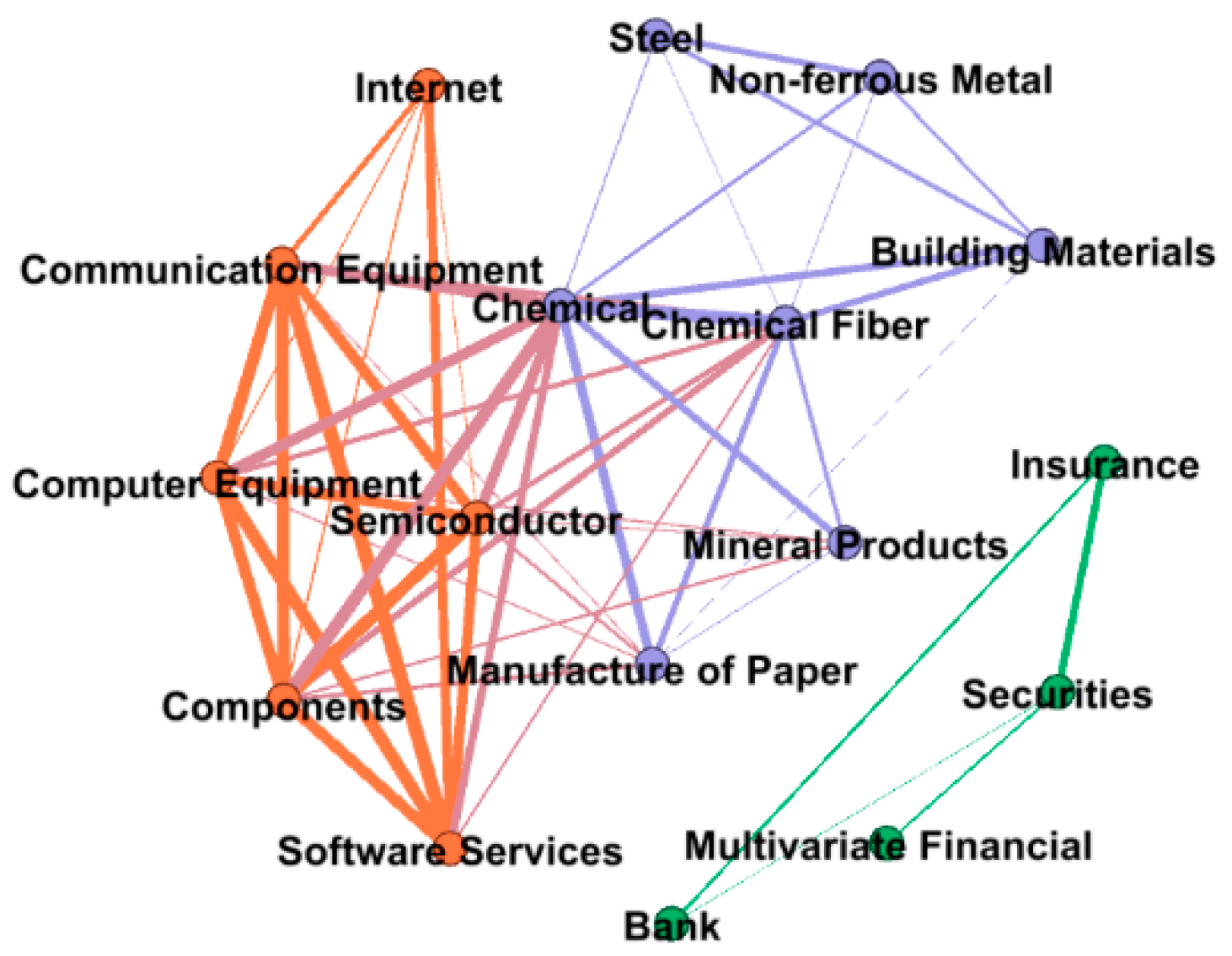
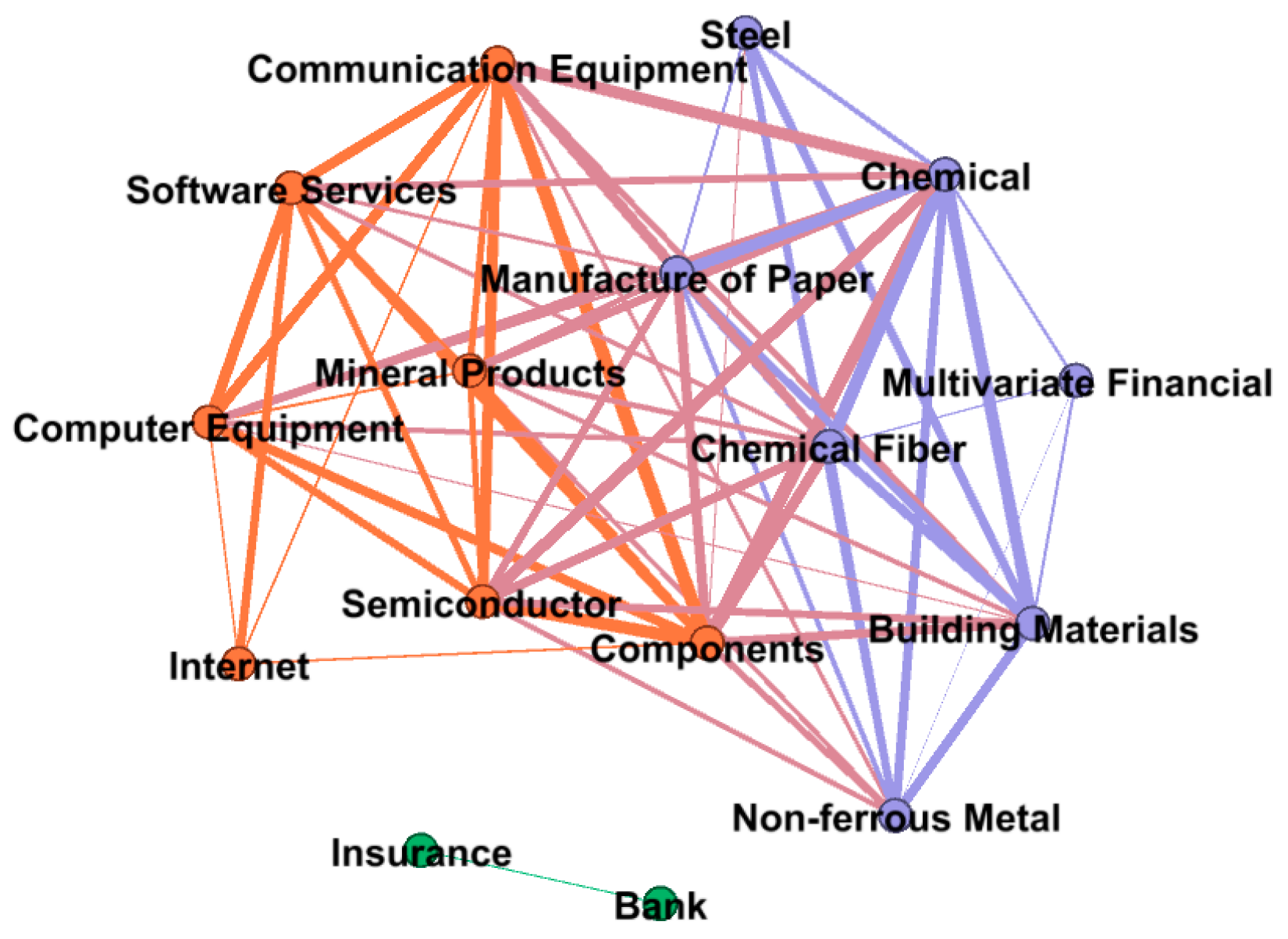
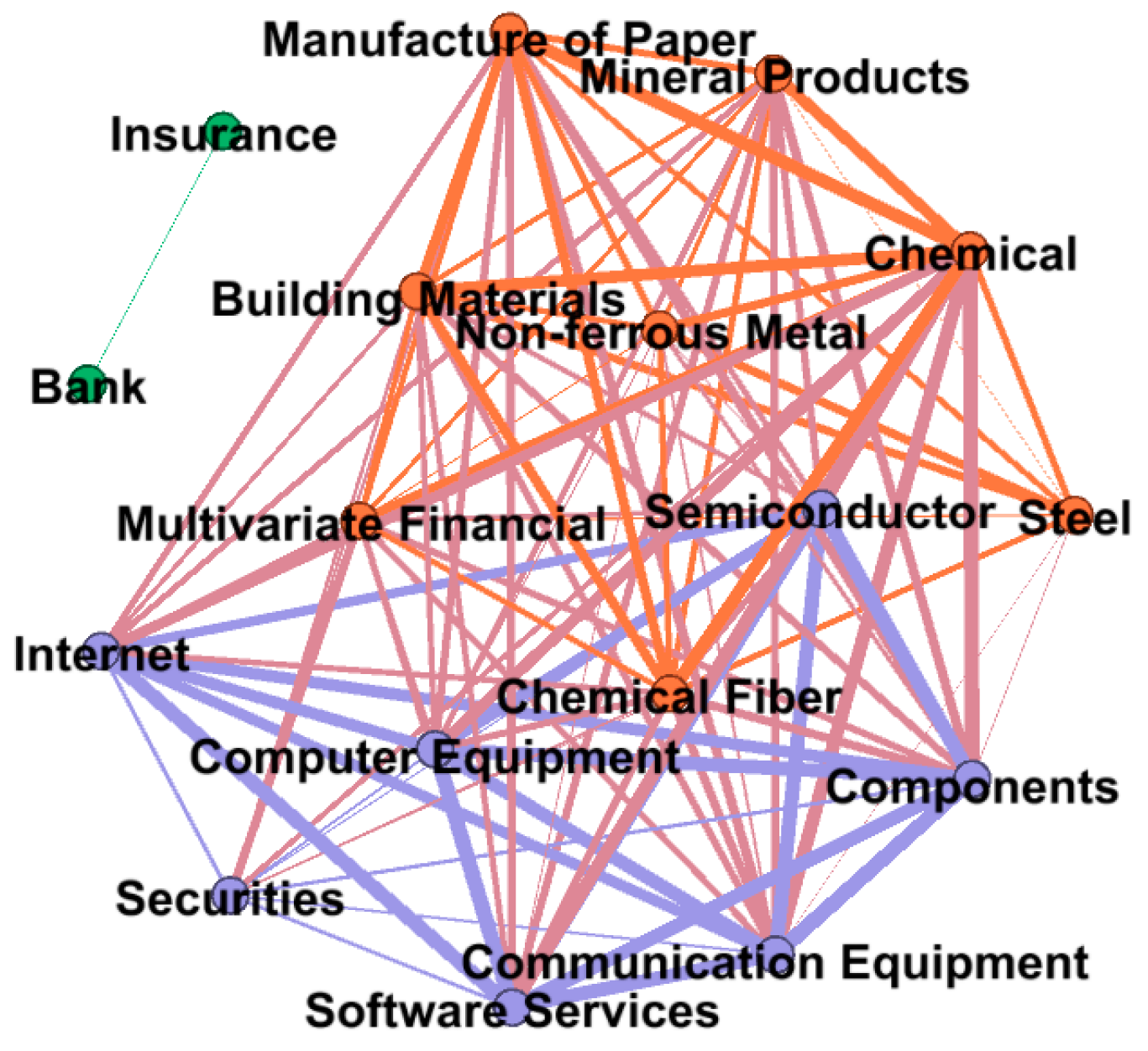
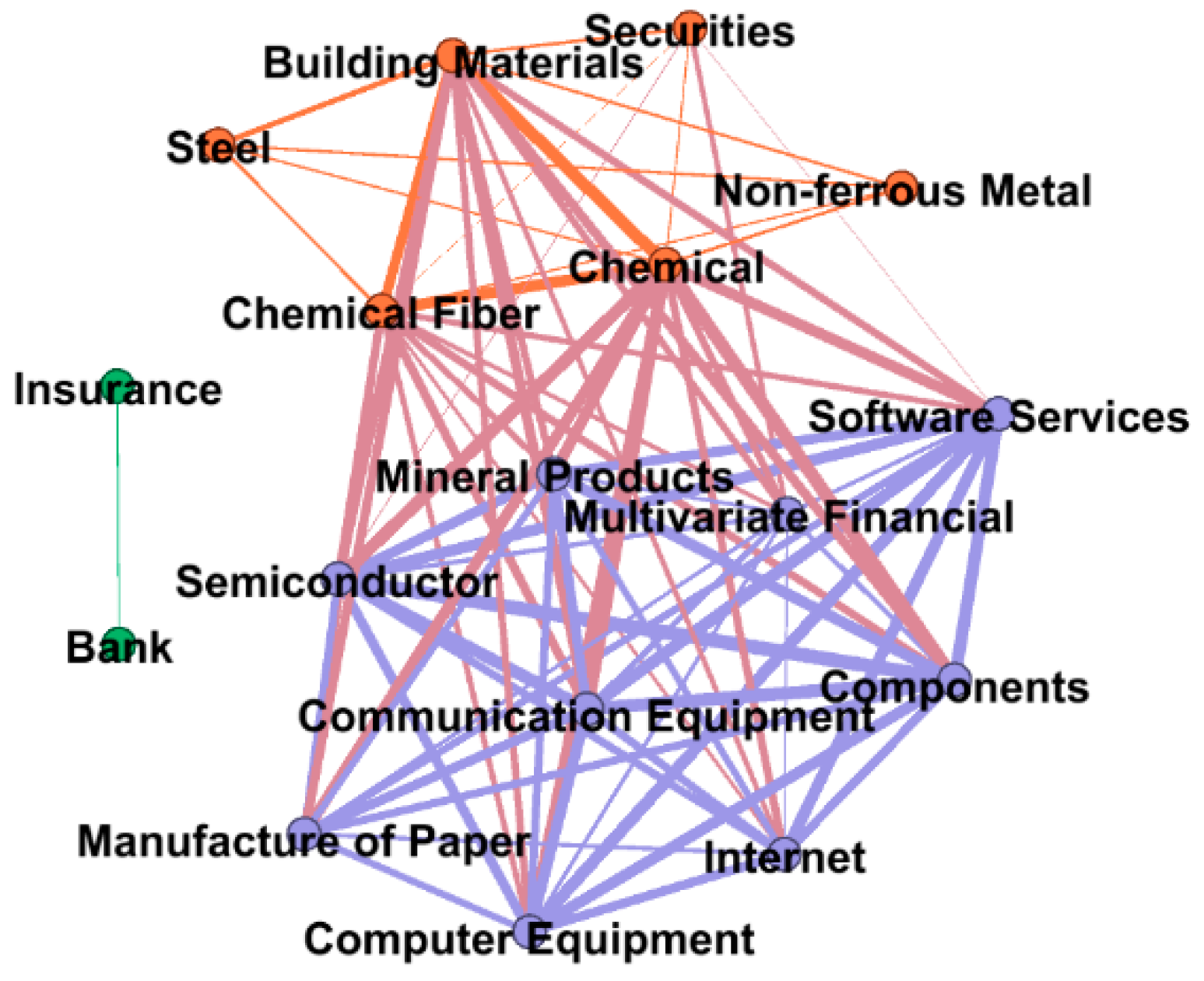
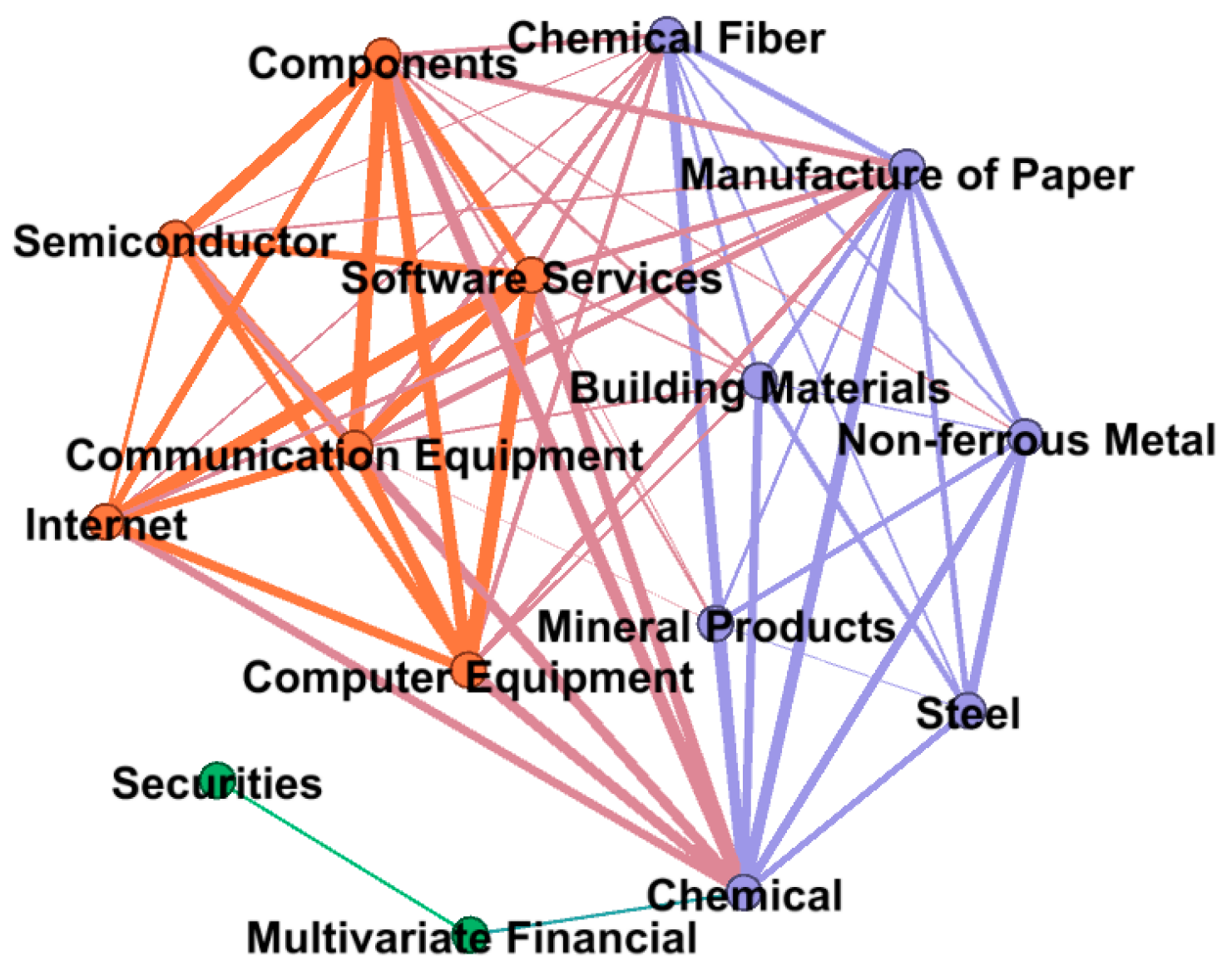
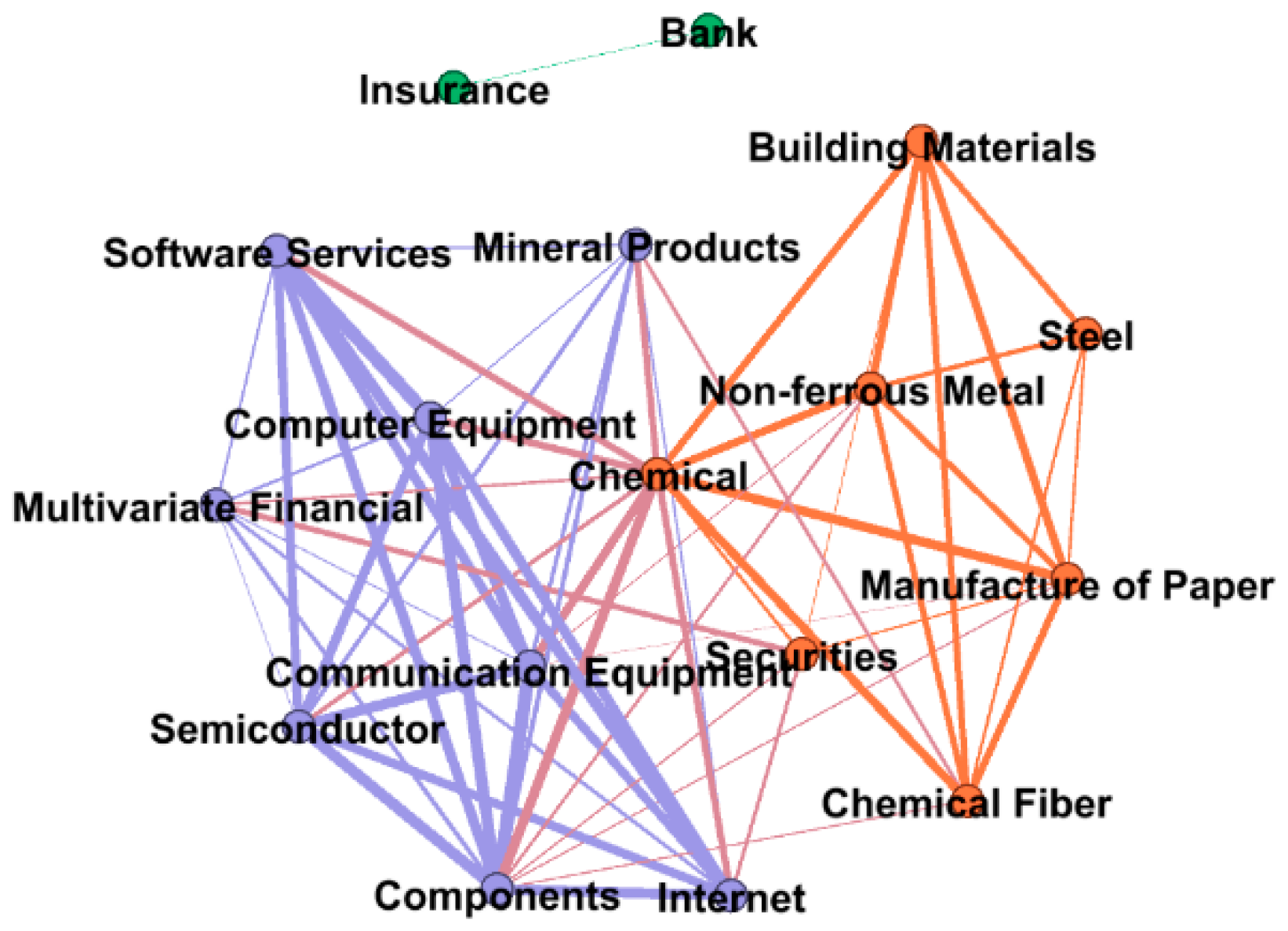
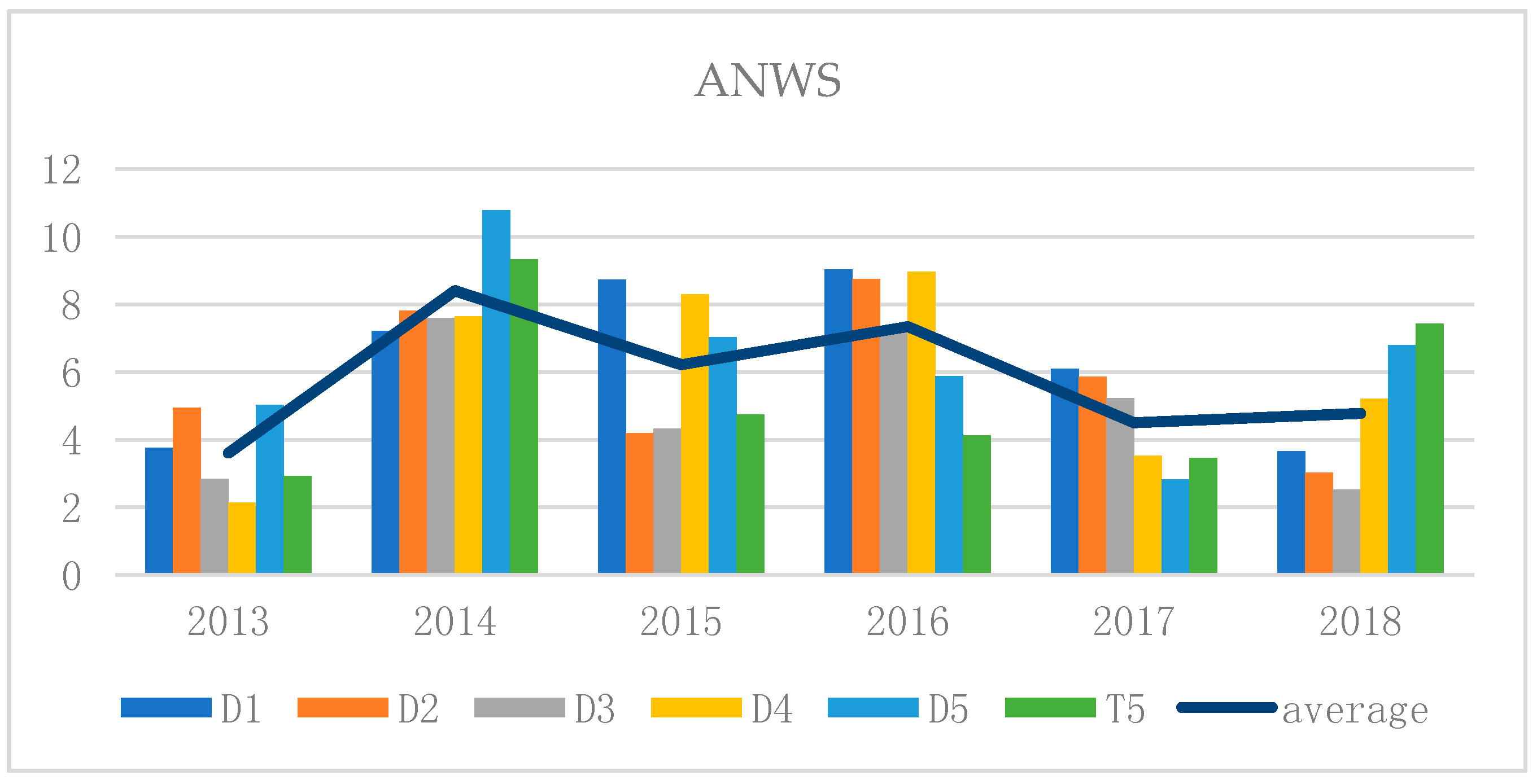
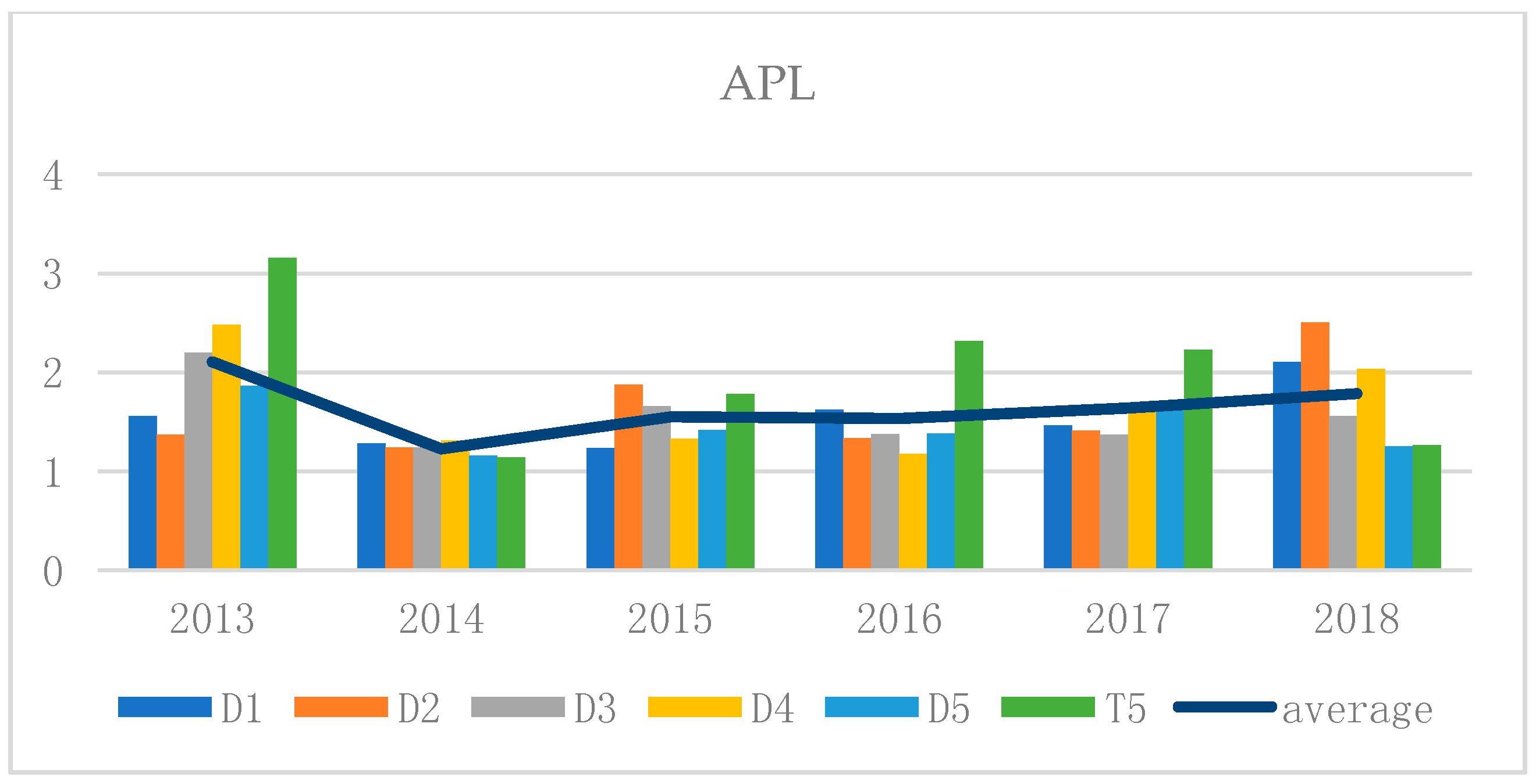
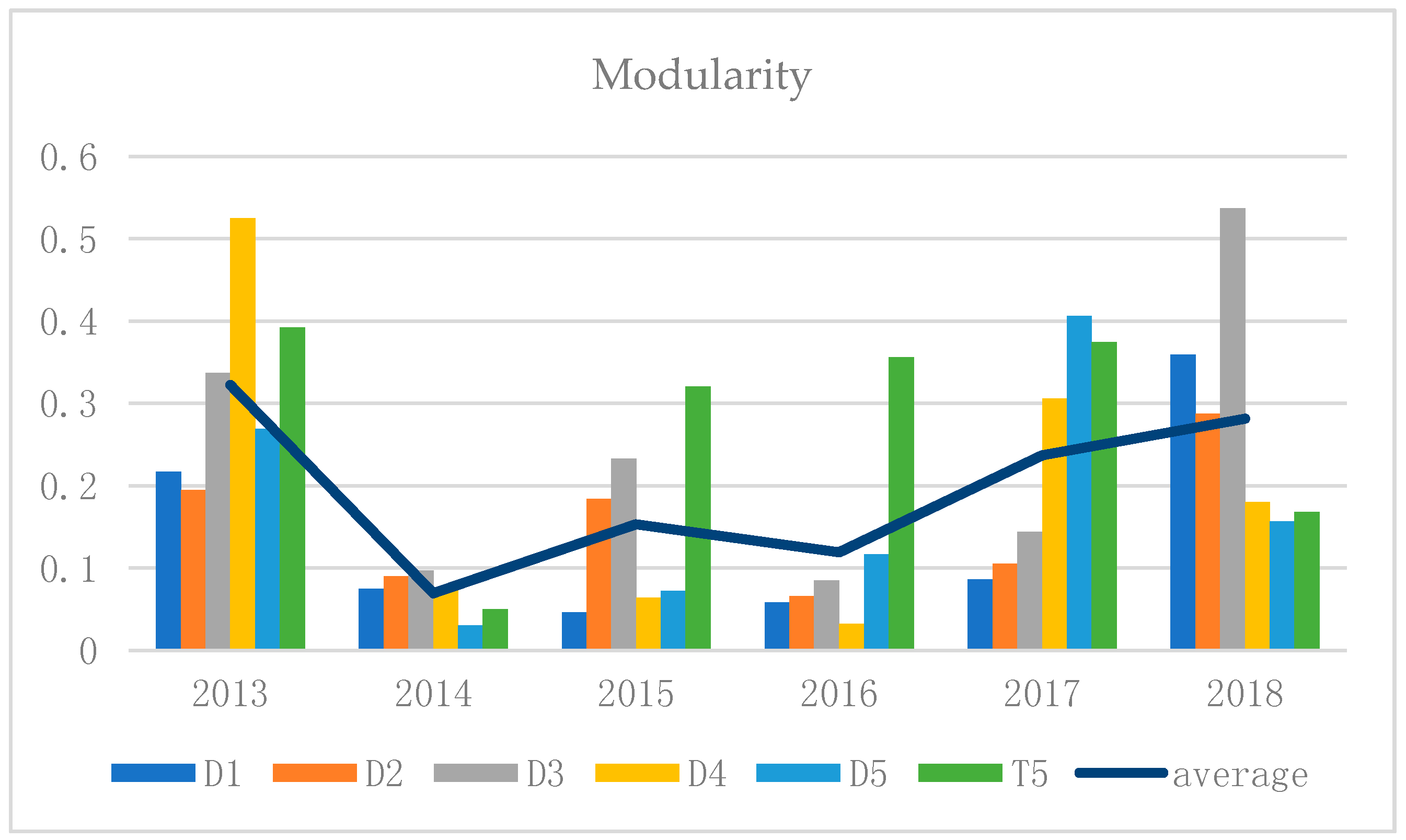
| Sub-Series | Time-Frequency Scales |
|---|---|
| 2–4 days | |
| 4–8 days | |
| … | … |
| – days | |
| > days |
| Accuracy | All | D1 | D2 | D3 | D4 | D5 | T5 |
|---|---|---|---|---|---|---|---|
| 2013 | 1 | 0.76 | 0.88 | 0.82 | 0.94 | 0.76 | 0.71 |
| 2014 | 0.82 | 0.82 | 0.82 | 0.82 | 0.71 | 0.76 | 0.71 |
| 2015 | 0.88 | 0.76 | 0.76 | 0.82 | 0.82 | 0.76 | 0.76 |
| 2016 | 0.76 | 0.82 | 0.71 | 0.47 | 0.76 | 0.76 | 0.64 |
| 2017 | 0.88 | 0.82 | 0.64 | 0.94 | 0.82 | 0.71 | 0.76 |
| 2018 | 0.82 | 0.88 | 0.76 | 0.82 | 0.76 | 0.64 | 0.71 |
| Average | 0.86 | 0.81 | 0.76 | 0.78 | 0.8 | 0.75 | 0.71 |
| Accuracy | All | D1 | D2 | D3 | D4 | D5 | T5 |
|---|---|---|---|---|---|---|---|
| 2013 | 1 | 0.73 | 0.93 | 0.86 | 0.86 | 1 | 0.8 |
| 2014 | 0.93 | 0.86 | 0.86 | 0.93 | 0.93 | 0.73 | 0.8 |
| 2015 | 0.93 | 0.8 | 0.73 | 0.93 | 0.93 | 0.8 | 0.8 |
| 2016 | 0.86 | 0.93 | 0.73 | 0.53 | 0.86 | 0.86 | 0.73 |
| 2017 | 0.86 | 0.8 | 0.73 | 0.93 | 1 | 0.73 | 0.8 |
| 2018 | 0.93 | 0.86 | 0.86 | 0.93 | 0.8 | 0.67 | 0.73 |
| Average | 0.92 | 0.83 | 0.81 | 0.85 | 0.90 | 0.80 | 0.78 |
© 2018 by the authors. Licensee MDPI, Basel, Switzerland. This article is an open access article distributed under the terms and conditions of the Creative Commons Attribution (CC BY) license (http://creativecommons.org/licenses/by/4.0/).
Share and Cite
Xu, L.; Xu, H.; Yu, J.; Wang, L. Linkage Effects Mining in Stock Market Based on Multi-Resolution Time Series Network. Information 2018, 9, 276. https://doi.org/10.3390/info9110276
Xu L, Xu H, Yu J, Wang L. Linkage Effects Mining in Stock Market Based on Multi-Resolution Time Series Network. Information. 2018; 9(11):276. https://doi.org/10.3390/info9110276
Chicago/Turabian StyleXu, Lingyu, Huan Xu, Jie Yu, and Lei Wang. 2018. "Linkage Effects Mining in Stock Market Based on Multi-Resolution Time Series Network" Information 9, no. 11: 276. https://doi.org/10.3390/info9110276
APA StyleXu, L., Xu, H., Yu, J., & Wang, L. (2018). Linkage Effects Mining in Stock Market Based on Multi-Resolution Time Series Network. Information, 9(11), 276. https://doi.org/10.3390/info9110276




